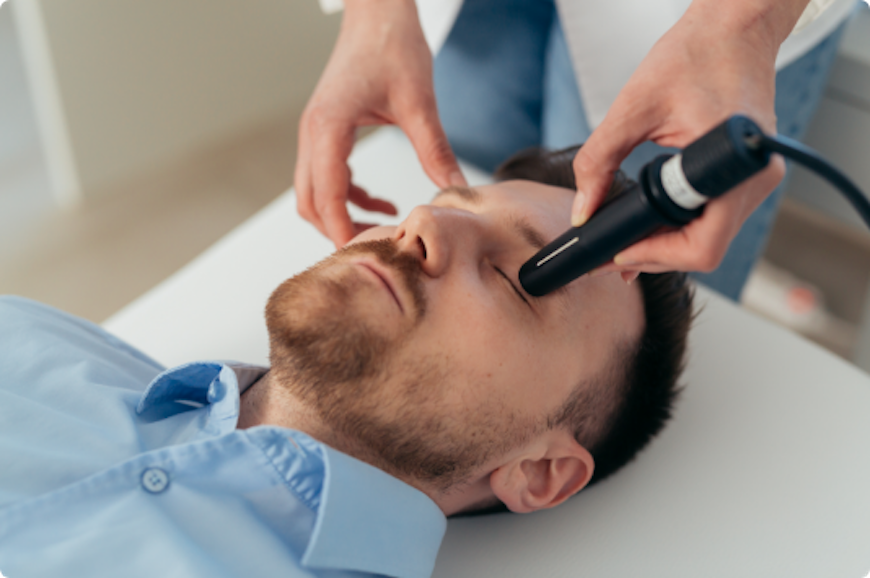Eye and Orbit Ultrasound
Ocular ultrasonography is an important additional clinical assessment of various ocular and orbital diseases. Understanding the indications for ultrasonography and proper examination technique, vast amount of information, which are not available with clinical examination alone, can be gathered. Ultrasound provides more detailed image of the inner eye structure and can solve unexplained eye problems, injury or trauma.

Ultrasonography can also be used to help diagnose or monitor:
- Eye biometry/growth
- Cataract (cloudy areas of the lens)
- Lens implants (plastic eye lenses after the natural lens have been removed, usually due to cataracts)
This procedure is helpful in identifying:
- Tumors (neoplasm/abnormal growths)
- Cysts
- Vitreous hemorrhage (bleeding into the clear gel or that fills the back of the eye)
In clinical practice we use two types of ultrasonography:
A-Scan ultrasonography
A-Scan ultrasonography is used to measure eye. This is useful in determining the correct lens implant for cataract surgery.
B-Scan ultrasonography
B-Scan ultrasonography helps a doctor see the space behind the eye that can’t be seen otherwise. It is helpful in tumors diagnosis, retinal detachment and other conditions.to complete.
There is no preparation required for an eye or orbital ultrasound. You will be able to drive after the procedure, or arrange transportation if it is more suitable to you. The procedure takes 15 to 30 minutes. The procedure is pain-free, although anesthetic drops will be used to numb the eye and minimize discomfort and damages of the eye front surface (scratching cornea).

